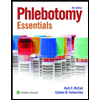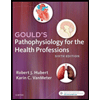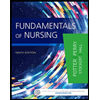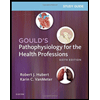
Concept explainers
To describe: The general structure and function of bone and joints.
Concept introduction: The musculoskeletal system of the body is composed of two types of systems; they are skeleton (bones and joint) and the soft tissues (skeletal muscles, ligaments, and tendons). Bones are the protective support for the tissues and organs of the body. They are the essential source of minerals in the body.
Explanation of Solution
Bones are the protective support for the tissues and organs of the body. They are the essential source of minerals in the body. They are classified into four types based upon their shape – long bones, flat bones, short bones, and irregular bones. Bones in the body are made up of compact bone tissue and spongy bone tissue.
Structure of bone:
- Periosteum: Periosteum is a fibrous, strong and vascular membrane that covers the long bone surface except the end region of the epiphyses. This region contains blood vessels, osteoblasts, nerves, and lymphatics. The main function of periosteum is to act as a canal for the extensive nerve supply toward the bone. The bones other than the long bones are covered by periosteum. Pain is experienced when periosteum is either torn or stretched.
- Endosteum: Endosteum is a thin, soft vascular connective tissue that lines the medullary cavities of long bones. It is located in bones such as humerus, femur, thoracic rib bones, hip bone, and sesamoid bones such as patella. Endosteum contains osteoblasts that mainly help in the growth of bones, bone repair, and remodeling.
- Epiphyseal plate: It is referred to as the area of cartilage tissue that is continuously being replaced by new bone tissues as the bone grows. The epiphyseal plate or line is commonly known as the growth plate. Cartilage cell at the edges of epiphyseal line forms a new bone that is responsible for lengthening of bones at childhood time and adolescence. After the bone achieves its full growth, the epiphyseal line calcifies and disappears.
- Metaphysis: It is the flared portion of a long bone, which is located in between the diaphysis (shaft) and the epiphysis. This region contains the growth plate (part of bone that grows during childhood). The main function of metaphysis is to transfer the loads from weight-bearing surfaces of the joint to the diaphysis.
- Epiphysis: This is the end round part of a long bone which initially grows separately from the shaft. It is composed of spongy bone which is covered by hyaline cartilage; this helps in the joint movement of articulation in between the bones.
- Diaphysis: It is a midsection or shaft of a long bone. It consists of cortical bone and mostly contains adipose tissue as well as bone marrow. Diaphysis is the middle tubular part which is made up of compact bone that surrounds a central marrow cavity that has both red and yellow bone marrow.
- Medullar cavity: The compact bones are referred to as the cortical bones which consist of a layer of hard, dense bones that lie under the periosteum in every bone and located mainly around the diaphysis of long bones. The compact bone is tunneled out in the central shaft of the long bones by a medullary cavity. It is the hollow interior of the middle portion of long bones. The endosteum lines the medullary cavities of long bones. Medullary cavity consists of both red and yellow bone marrow. Hence, it is also called as marrow cavity.
Functions of bone:
- Protection: Bones are the protective support for the tissues and organs of the body.
- Shape: As bones have a rigid nature, they provide a framework around which the body is built. Thus, bones help in the formation and shape of the body.
- Movement: Bones help in the movement of body by acting as levers and attaching points for the muscles.
- Mineral storage: Bones serve as a crucial source of minerals, such as phosphorus and calcium, in the body.
- Synthesis of blood cells: Bones function to generate blood cells through a process called hematopoiesis. The red bone marrow produces the blood cells and the yellow bone marrow acts as energy storage of fats.
- Role in acid-base balance: Bone buffers the blood against extreme changes in pH by absorbing or liberating alkaline salts.
Structure of joints:
A joint is the meeting of two bones such as the shoulder. The function of joints is to supply stability and mobility to the skeleton.
- Articular capsule: They are also known as joint capsule. These capsules are the outer covering of synovial joint. Fibrous capsule is a tough protective substance that extends into the periosteum of all articulating bones.
- Articular cartilage: It is a type of hyaline cartilage that is present on the articular surfaces of the bones. It also lies within the synovial joint cavity. This structure reduces friction in the joints. The articular cartilage provides smooth, lubricated surface and a slight cushion during the movement in a joint.
- The synovial membrane (synovium): It is a smooth connective tissue that lines the capsules of joints present in the nonarticular region of the synovial joint. The main function of the synovial membrane is to secrete the synovial fluid, which helps in lubrication. These fluids lubricate the surfaces of joints, which help to ease the movement of joints. Also, the synovial membrane is well supplied with lymphatic vessels and blood vessels; it is capable of complete and rapid regeneration and repair.
- Synovial fluid: Synovial fluid is a thick liquid present in between the space of articulating ends of bones. It is produced by the synovial membrane (synovium). Synovial fluid has a lubricating function. It lubricates the surfaces of joints which help to ease the movement of a joint.
- Tendons: The connective tissue that attaches the muscles to the bones is called tendon. They are non-elastic fibrous connective tissues covering the muscle (perimysium). Usually, one tendon is present per muscle. It is the modification of white fibrous tissue. Fibroblasts in tendons are present in continuous rows. Tendons have a heavy supply of blood.
- Ligaments: Ligaments are the dense connective tissues present in the synovial fluid, which function to join the adjacent bones.
- Bursae: They are sac-like (fluid-filled) structures composed of synovial fluid and are located in between the tendons and ligaments. They act as additional cushions in the joints.
- Menisci: They are a pad of fibrocartilage that separates certain joints.
Joints are mainly classified on the basis of degree of movement. They are synarthroses, amphiarthroses, and diarthroses or synovial joints.
- Synarthroses: Synarthroses are a type of joint present in the bones of the skull. They are immovable joints and are present at the location where the bones protect the internal organs. The bones of the skull are attached to each other by these immovable joints. The suture joint of the skull is an example of the synarthroses joint.
- Amphiarthroses: Amphiarthroses, consisting of fibrocartilage, are a type of continuous, slightly movable joints which are required for the articulation between the ribs and sternum. In this type of joints, the hyaline cartilage or fibrocartilage helps to connect between two bones. The symphysis and junction of the ribs, and sternum are the examples for amphiarthroses joints.
- Diarthroses or synovial joints: They are the most common and freely movable joints in the body.
Functions of joints:
- The joints are the functional junctions between the bones and they help in articulation.
- The joints bind or hold the skeletal bones together.
- They provide flexibility to the skeleton parts for the gross movement of the body.
- They help in the growth of bones.
- They facilitate the body movement in response to the contraction of skeletal muscles.
Want to see more full solutions like this?
Chapter 9 Solutions
EBK GOULD'S PATHOPHYSIOLOGY FOR THE HEA
- • Define shock and list types of shock • Discuss pathogenesis of septic shock. • Enumerate the stages of shock. • Define oedema and describe the pathophysiologic mechanisms of oedema with examples.arrow_forwardDiscuss Hypertension under the following headings: Definition Diagnosis Non-pharmacological intervention Drugs Classification Management of a Hypertensive emergencyarrow_forwardExplain how the answer could be 2 or 1.8 WITHOUT changing the questionarrow_forward
- overview of the neurological system, cranial nerves and what part of the body it innervatesarrow_forwarddifferentiate structure and function of the peripheral vascular system. what are the normal and abnormal findings of the peripheral arterioles and peripheral venous systemarrow_forwardAn overview of the skin, hair and nails epidermal appendages normal and abnormal findingsarrow_forward
- differentiate the twelve cranial nerves and how to test themarrow_forwardWhat are the nursing interventions for patients with GI problems ? What is the priority ?arrow_forwardAdult Nutrition Assessment Date of consultation: 3/2/25 Reason for Nutrition Assessment: Mrs. Clover was referred to the RD from the ER physician; patient experiencing weight loss, SOB & Edema Nutrition Assessment Data 69 YOF Ht 157 cm, Wt 53 kg. BMI 21.7 Usual wt 55 kg Heart: slight physiologic murmur; lungs: clear; extremities: 3+ edema to bilateral lower legs; elevated BP, abdomen: soft, nontender, active bowel sounds; neurologic: unremarkable; skin: diminished skin tugor. Biochemical Data BUN 72, Creatinine 4.6, Calcium 7.2, Phosphorus 7.3, glucose 105, BNP 720, Albumin 2.0, Na 125, K 3.3, CI 93. Hgb 11.5, Hct 33.2, ALT 29, AST 36, Alkaline phosphatase 120, other relevant labs pending result. Medications Include inhalers, Cymbalta, Neurontin, Seroquel, and topiramate, prilosec, solumedrol, rocephin, zithromax, NaCl 0.45%+50 MEQ sodium bicarbonate @100 ml/hr. No history of herbal supplements. Since her pneumonia diagnosis several days ago, she has felt too weak to prepare meals, she…arrow_forward
- Assuming you are a community health nurse, choose a community of your own and perform practically the following and report your findings: a. Community Assessment b. Community Diagnosisarrow_forwardDescribe practically how you would use a standing order in the diagnosis and treatment of a 10-year-old primary school pupil with a complaint of haematuria at the end of the urine.arrow_forwardSimple explanations, please. B. Why is an accurate diagnosis of malnutrition important? H. Is BMI a food indicator of malnutrition? I. Can an overweight/obese patient develop malnutrition? Why or why not?arrow_forward
 Phlebotomy EssentialsNursingISBN:9781451194524Author:Ruth McCall, Cathee M. Tankersley MT(ASCP)Publisher:JONES+BARTLETT PUBLISHERS, INC.
Phlebotomy EssentialsNursingISBN:9781451194524Author:Ruth McCall, Cathee M. Tankersley MT(ASCP)Publisher:JONES+BARTLETT PUBLISHERS, INC. Gould's Pathophysiology for the Health Profession...NursingISBN:9780323414425Author:Robert J Hubert BSPublisher:Saunders
Gould's Pathophysiology for the Health Profession...NursingISBN:9780323414425Author:Robert J Hubert BSPublisher:Saunders Fundamentals Of NursingNursingISBN:9781496362179Author:Taylor, Carol (carol R.), LYNN, Pamela (pamela Barbara), Bartlett, Jennifer L.Publisher:Wolters Kluwer,
Fundamentals Of NursingNursingISBN:9781496362179Author:Taylor, Carol (carol R.), LYNN, Pamela (pamela Barbara), Bartlett, Jennifer L.Publisher:Wolters Kluwer, Fundamentals of Nursing, 9eNursingISBN:9780323327404Author:Patricia A. Potter RN MSN PhD FAAN, Anne Griffin Perry RN EdD FAAN, Patricia Stockert RN BSN MS PhD, Amy Hall RN BSN MS PhD CNEPublisher:Elsevier Science
Fundamentals of Nursing, 9eNursingISBN:9780323327404Author:Patricia A. Potter RN MSN PhD FAAN, Anne Griffin Perry RN EdD FAAN, Patricia Stockert RN BSN MS PhD, Amy Hall RN BSN MS PhD CNEPublisher:Elsevier Science Study Guide for Gould's Pathophysiology for the H...NursingISBN:9780323414142Author:Hubert BS, Robert J; VanMeter PhD, Karin C.Publisher:Saunders
Study Guide for Gould's Pathophysiology for the H...NursingISBN:9780323414142Author:Hubert BS, Robert J; VanMeter PhD, Karin C.Publisher:Saunders Issues and Ethics in the Helping Professions (Min...NursingISBN:9781337406291Author:Gerald Corey, Marianne Schneider Corey, Cindy CoreyPublisher:Cengage Learning
Issues and Ethics in the Helping Professions (Min...NursingISBN:9781337406291Author:Gerald Corey, Marianne Schneider Corey, Cindy CoreyPublisher:Cengage Learning





